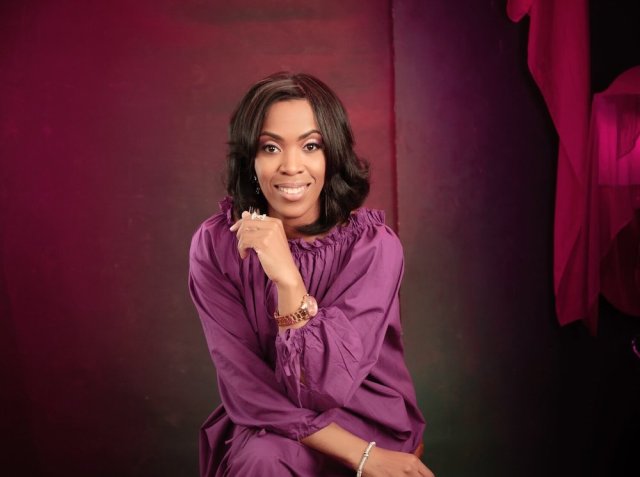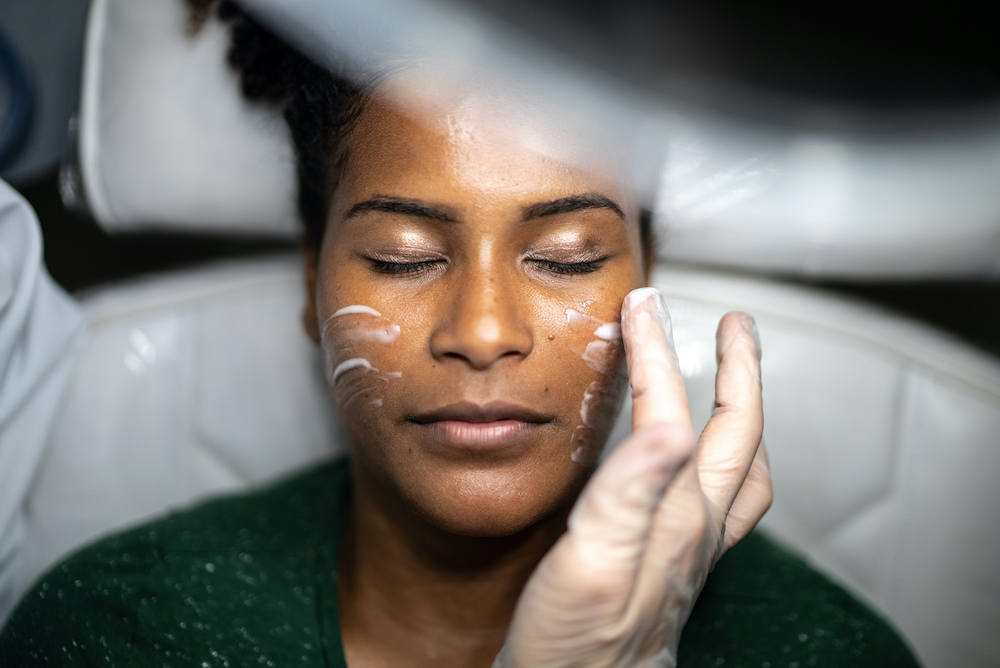Hannah Gay meets The Skin Theologian, and delves deep into the often uncomfortable issues we face around treating and connecting with Black clients.
Let’s be blunt about this: White skin science and management forms the bread-and-butter of the international professional skincare space.
From your early days as budding therapists undertaking training at your chosen beauty schools, textbooks will have you believe that lighter skin is the skin to treat; that indications that appear on lighter skin tones are those to know, and that treating the skin provides a lesson in science, skill and physical labour. Period.
While treating Black skin may appear to be a simple difference in pigmentation, it can come with a whole set of racial and cultural practices that can be misunderstood and possibly even disrespected.
The discussion is not intentionally bias or discriminatory, but that’s not the point. It’s no secret that even the most knowledgeable and experienced skin therapists can feel insecure when it comes to tackling Fitzpatricks types 4 and above.
C.R. Cooper is The Skin Theologian. She’s a skin therapist and educator of 25 years. She’s penned two books, and is passionate about Black representation in our industry.
For this skin guru, education around skin health extends far beyond the science of our dermal layers. Instead, C.R. takes a far more holistic approach, describing the practice of skin management as an opportunity to verse oneself in the social and cultural identities of others. The motive behind her ‘Skin Theologian’ title is to delve into the concept of ‘truth’ and to lay bare the traditionally dismissed, often uncomfortable conversations around who people are and what their skin truly represents.

Her driver is the absence of conversation around how to treat coloured skin, namely Black skin. For the Skin Theologian, education around the treatment and management of Black skin should fall in line with that of lighter skins. “Because we’re more aware globally, we’re realising that what we said was okay in the 80s and the 90s, but it’s not really okay now for this new clientele, or the new demand in the industry,” she says.
While vital skin therapists understand Black people and their skin from a physical standpoint, a lack of awareness and understanding on an emotional front should similarly be addressed. “I refer to it as shifting or deepening client care, which we are all about as skin professionals; that’s our ethos. We want to care for the client, from shifting not from the client care but to be client aware. We’ve got to get to know the narrative. We’ve got to know what their traditions are, what their values are, what their beliefs are.”
The idea that clients feel the need to search for skin therapists that look like them is not okay, she argues. This practice places People of Colour (POC) on the backfoot and in turn, places the skin therapist on the backfoot, disabling relationships by barricading them from developing in the first place. The correlation between a skin therapist’s experience and their ability to hear, she suggests, is not linear. Fear gets in the way of trust – fear of not understanding the individual, fear of not understanding traditions, or the pressures one faces “to fit in”. Today, Gen Z’ers and Gen Alpha’s take this fear to another level by exacerbating the idea that it’s not okay to offend, she says, and as a result, we’re afraid to say anything at all. And while understanding is imperative, she adds that mastering your communication style is vital to ensuring a client feels understood. “The cultural piece is connected to emotional intelligence, and adapted to social intelligence.”
Fear gets in the way of trust – fear of not understanding the individual, fear of not understanding traditions, or the pressures one faces “to fit in”.
C.R. reflects on early memories surrounding her skin and the messages she received as a Black adolescent. At the time, big box companies sold bleaching agents for the skin, marketed to POC as an ideal beauty solution. Stuck in a seemingly vicious cycle, consumer demand for such products remained ripe, yet did nothing to reset the discriminatory narrative consumers were used to. “When I’m made to feel like an ‘other’, that is separating me automatically. I am either not good enough, or I can’t have that, or I’m lesser than, and the ‘othering’ can be transported in any sector of life – ‘Oh, no, you can’t have that’; and then we’re turning away business. While “the dollar is still speaking,” she says, the onus similarly rests on the skin therapist to help redirect the conversation. That’s up that steep mountain, but we’re doing something. You gotta be able to start to educate clients, but it’s not taught down. It’s what’s taught.”
“When I’m made to feel like an ‘other’, that is separating me automatically. I am either not good enough, or I can’t have that, or I’m lesser than, and the ‘othering’ can be transported in any sector of life.” – C.R. Cooper
On adapting skincare to suit various skin tones, C.R. advocates a progressive approach when it comes to utilising active ingredients. “It’s about understanding the pH level, the relative strength with percentages of the blend. “To not identify that black women especially have a need for efficacious formulation in hair, skin and in bodies is to leave money on the table. I believe that skin therapists that haven’t embraced diversity or diversifying their clientele, cross-sectioning their culture of clientele… what they don’t understand is that they’re missing a whole piece of the pie, and that our business relies on growing business.”
Access to more invasive treatments, like Botox for example, is further limited still, she says. “I think that actually stems from a cultural belief in the Black community that we don’t need it; that we shouldn’t have it like you. And that’s really the founding lie that supports all of these other lies.” For the skin therapist, misunderstanding exists in the idea that such skin tones cannot handle lasers, more ablative, or aggressive treatments without the risk of causing further pigmentation and damage.”Bringing a balance to that, I break down that technology has stagnated for 20 years. There were no diversity options or laser. That’s changing. I believe that the manufacturers of device companies are answering that call.”
“To not identify that black women especially have a need for efficacious formulation in hair, skin and in bodies is to leave money on the table.” – C.R. Cooper
“What we’re now understanding is that yes, there are some risks. Let’s educate skin therapists on what type of lasers can be used. And there’s so many more companies… that are trying to ride that wave of trend. [However], it’s not really [working] and it’s giving minimal results… versus one [where you’ve done your] due diligence, you’ve done your research, and is a safe laser that bypasses the melanocyte. That’s where we need to go. That’s the issue: it stimulates the melanin and you know the light needs to be reflected in a way that’s different that reading a lighter skin… that’s the caliber of education that needs to be discussed at undergraduate level that’s not being discussed. Instructors aren’t even continuing their education, and we have got to continue our education.”
Using Fitzpatrick’s scale in and of itself, is limiting – “it is limiting when you understand the beauty of multiculturalism around the world.” In order to really get this right, C.R. recommends marrying Fitzpatrick with the Lancer [Ancestry] or Roberts scales. “And there’s so many dermatologists that create their own scale and name it after themselves. There are at least 20 different scales that are commonly used globally… they’re all bias.”
“What I’m hearing now is that it’s still very common to work on lighter skin tones, but not very common to work on darker skin tones.” The answer, while resting in better education around diversity, should not simply come in the form of ‘token diversity’. “I think it has to come from a place of experiential cultural understanding that is infused into the curriculum.” On the flip side, she insists that while education on Black skin is important, this shouldn’t come at the detriment of other skin tones.
While emerging skin therapists can take advantage of most diverse curriculums, those who have been in the industry for decades will need to take a different approach to their education on these issues. “[It’s important we] acknowledge their expertise, where they’re at. Acknowledging that ‘you’ve done great’, ‘we’ve done great as an industry’, ‘congratulations’. A part of your effectiveness [as a skin therapist] is caring about that client, and continuing to care. So part of the continuation is seeing and assessing what new technologies are available, what we may have been missing that needs to be addressed now, but didn’t need to be addressed ten years ago… there was no need for it. Now there’s a need. You’ve got to be forward-thinking, and think about where your business is going, even though you may be just fine right where you are now.” C.R. compares this way of thinking to ‘The S Curve’, whereby business owners hypothetically work their way up toward a goal. Once goals are achieved, it’s at that time a business should reinvent itself to continue on an upward trajectory. “Inevitably there’s going to be a decline at some point – economically, in the relationship or what have you. So it’s at that peak moment, where we’re at the precipice, that you can choose, because it’s a choice to continue to better yourself.
“If you’ve got prospects that are watching you from afar, and they always are [in this] digitised age with social media and everything, you’re missing money that you’re not even tapping into just because maybe your values aren’t there yet.”
“I believe in acknowledging where the skin therapist has been, but there’s a need right now… you don’t see it’s going to be felt in a little while. It’s gonna play out, and if you want to be at the table, and have that seat at the table, you’ve got to be able to be open to something new that you haven’t been open to in the past.”
“If you want to be at the table, and have that seat at the table, you’ve got to be able to be open to something new that you haven’t been open to in the past.” – C.R. Cooper
For educators like C.R., that ‘something new’ is the cultural piece – the authentic connection with clients because we simply can’t survive without them. “People want to know that you care about them. They don’t care about what you say, they care about how they feel when they’re with you.” While conversation is far from over and in many ways, hasn’t quite begun, the awareness we hold today that something needs to change will, with any luck, set the tone for curriculums to come.
Check out a range of resources by C.R. Cooper, available on Amazon AU.
Read the current issue of our digital magazine here:
- For more news and updates, subscribe to our weekly newsletter
- Follow us on Instagram
- Like us on Facebook
- Join Australia’s largest network of beauty industry professionals on LinkedIn
- Subscribe to our print magazine
Have an idea for a story or want to see a topic covered on our site and in our pages? Get in touch at info@professionalbeauty.com.au.

